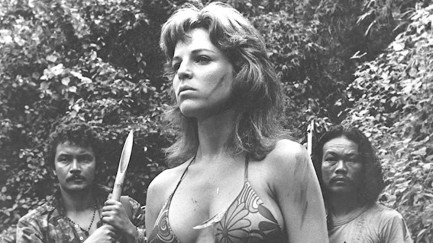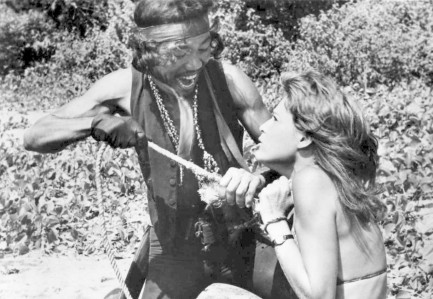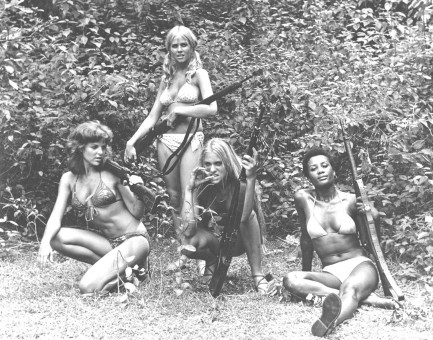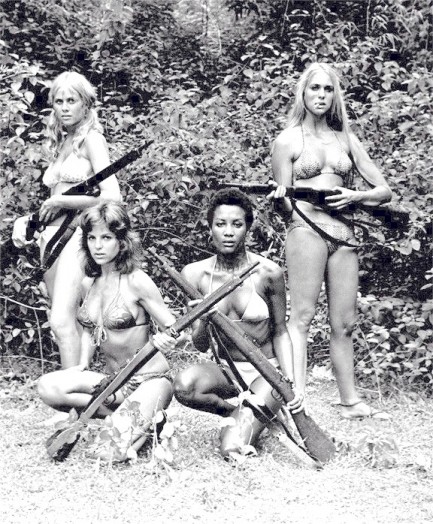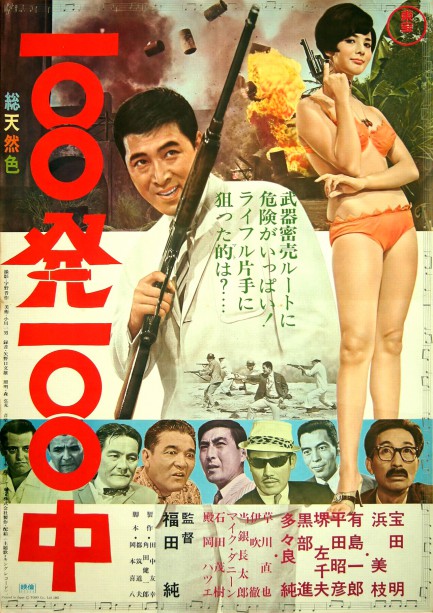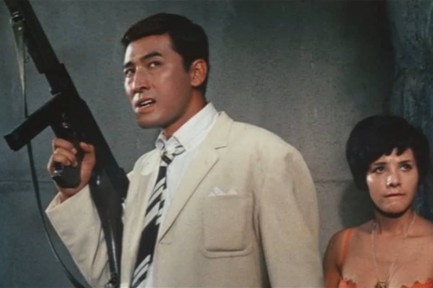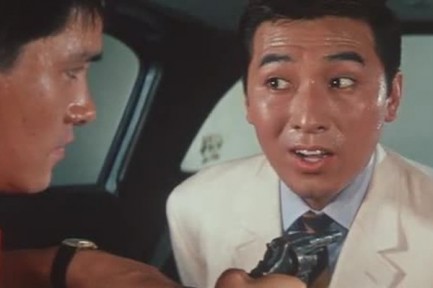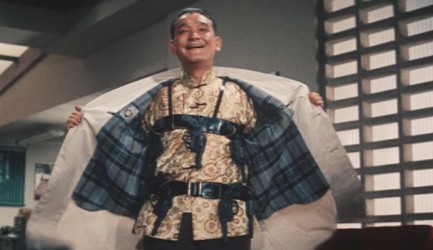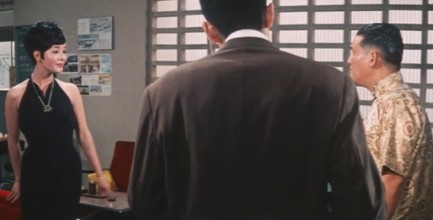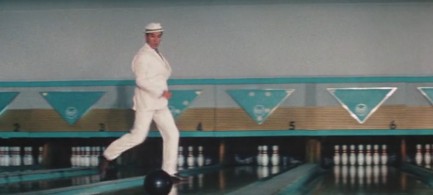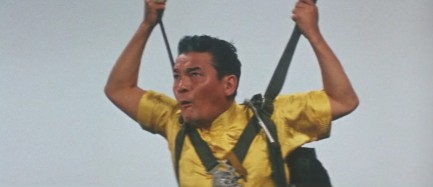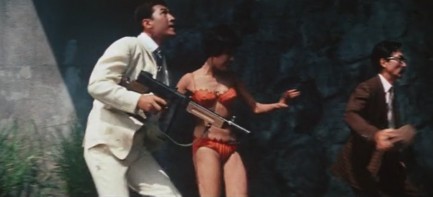 Pageant winner fulfilled show business and personal ambitions. Then things went wrong.  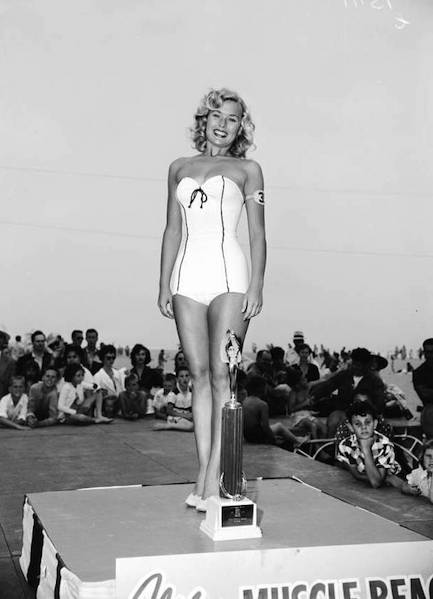 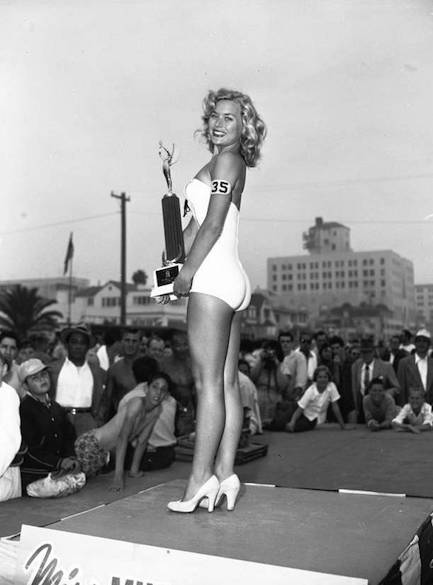
Beauty pageants are a bit silly, perhaps, but the participants are generally ambitious people who see them as stepping stones to show business or modeling. And in mid-century Los Angeles in particular, even minor pageants occasionally led to stardom. In the above photos high school student Barbara Thomason wins the crown of Miss Muscle Beach 1954. Listed at 5 foot 3 inches and 110 pounds, she was a body-building enthusiast, and in the shot just below she celebrates her hard fought win by pumping a bit of iron while photographers click away and a crowd watches.
Did Thomason's victory lead to bigger things? Maybe not directly, but it probably helped. She was a habitual pageant participant who also won Miss Huntington Beach, Miss Van Ness, Miss Bay Beach, Miss Southwest Los Angeles, Miss Pacific Coast, Queen of Southern California,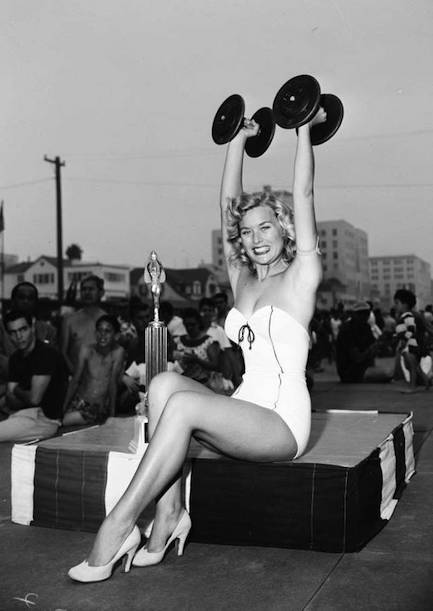 and ten other titles. All that winning finally got her noticed by Hollywood movers and shakers. In 1955, performing under the name Carolyn Mitchell, she made her acting debut on the television show Crossroads, and in 1958 co-starred in two Roger Corman b-movies, The Crybaby Killer and Dragstrip Riot. and ten other titles. All that winning finally got her noticed by Hollywood movers and shakers. In 1955, performing under the name Carolyn Mitchell, she made her acting debut on the television show Crossroads, and in 1958 co-starred in two Roger Corman b-movies, The Crybaby Killer and Dragstrip Riot. But she put her career on hold when she met and married a star—Mickey Rooney, who was nearly seventeen years her senior and nearly two inches her junior. Their union had problems from the beginning. The couple married secretly in Mexico because Rooney was still awaiting a divorce from actress Elaine Mahnken. They would have to wait almost two years before the law allowed them to wed in the U.S. Legalities, though doubtless bothersome, were the least of their problems. During the next six years, during which Thomason bore four children, Rooney indulged in numerous affairs.
It should probably be noted here that Thomason was Rooney's fifth wife. Among the predecessors were goddesses like Ava Gardner and Martha Vickers. We don't know what Thomason's expectations of marriage were, but clearly Rooney didn't know the meaning of the phrase “for better or worse.” The affairs continued, and eventually Thomason did the same with a temperamental Yugoslavian actor named Milos Milosevic, who performed under the name Milos Milos. But what was good for goose was not 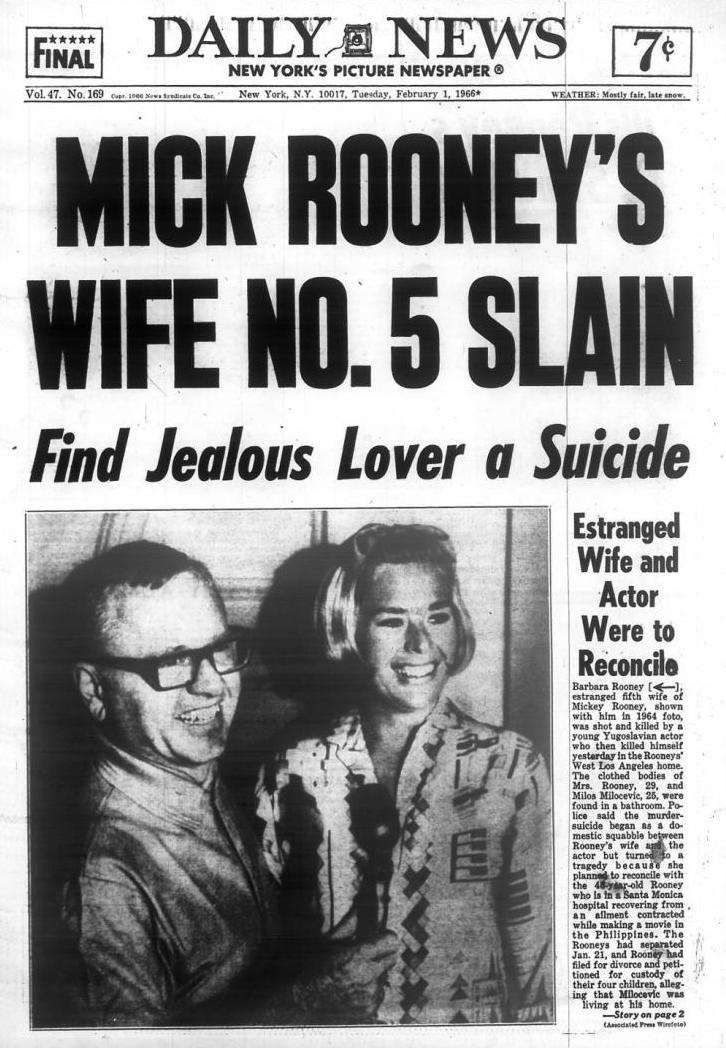 good for the gander—Rooney found out about these international relations, moved out of the Brentwood house he shared with Thomason, and filed for divorce, charging mental cruelty. The nerve, right? good for the gander—Rooney found out about these international relations, moved out of the Brentwood house he shared with Thomason, and filed for divorce, charging mental cruelty. The nerve, right?
On the morning of January 31, 1966, while Rooney was in St. John's Hospital recovering from an intestinal infection he'd picked up in the Philippines, Thomason and Milosevic were found together on the bathroom floor of the Brentwood house, dead. Milosevic had shot Thomason under the chin and killed himself with a temple shot using a chrome-plated .38 Rooney had bought in 1964. The consensus is Thomason had decided to dump Milosevic and he flipped out.
The photos below show Thomason on Muscle Beach during her halcyon years there, a mere teenager, frolicking in the sun, filled with youthful hopes for a good life. She won beauty titles, acted in films, married an icon, and had four children. Any of those accomplishments would have been good legacies. Instead her death at twenty-nine overshadowed all the rest, and she's remembered as another celebrity murder victim, Hollywood style, which is always somehow both sensational and banal. 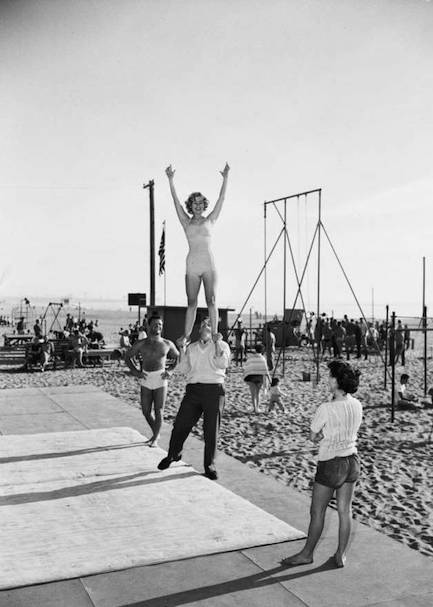 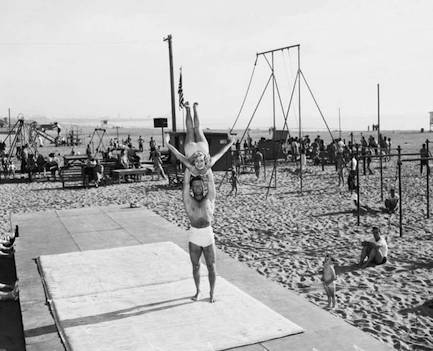 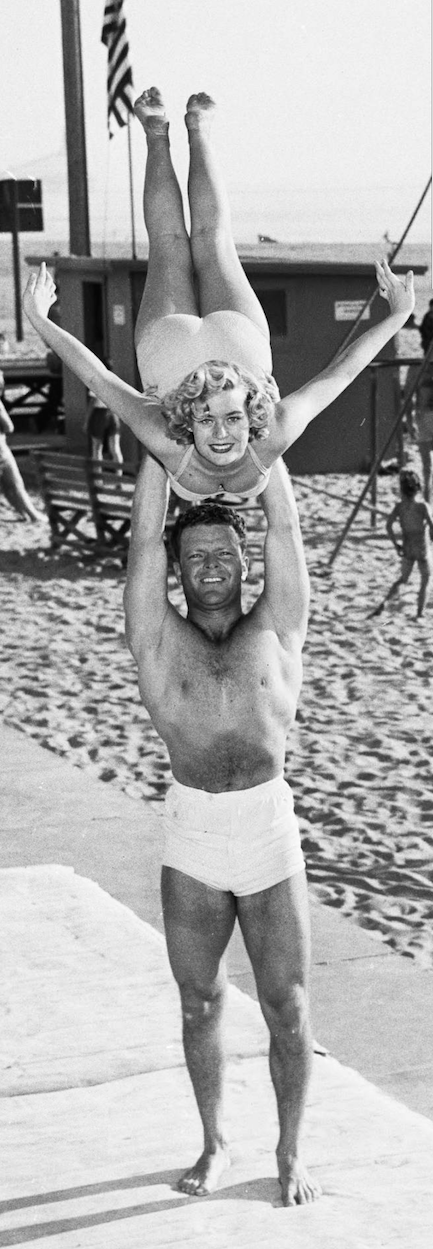
 One Wong makes everything right. 
This fun poster was made for the 1978 action flick Cleopatra Wong, aka They Call Her...Cleopatra Wong, and it's signed by someone named Eddie Damer. We can find zero information about Mr. Damer, which we like to think is because he moved into another career after being paid for his artistry in handshakes, backslaps, and a rubber check. Which is to say, Cleopatra Wong is a not a b-movie, but z-movie, a riff on the blaxploitation classic Cleopatra Jones. It was put together by Filipino producer Bobby A. Suarez and made in English with Singaporean actress Marrie Lee in the lead role as an Interpol agent tasked with busting an international counterfeiting ring. These counterfeiters are bad people. They're centered in a Hong Kong nunnery, where they're forcing the nuns to host the operation, and plan to kill them when they've outlived their usefulness. Only Wong and her intrepid team can stop these fiends. There are some positives here, including effective location shooting and Lee's kung fu, but there's also clunky direction, atrocious acting, and a script that must have been written on a typewriter with seven missing keys. The movie sank with barely a ripple upon release, but was revived on the Asian festival circuit in the early 2000s and now is considered a schlock classic. It certainly has all the hallmarks, and overall we think it's worth watching, but you may want to soak your frontal cortex in alcohol beforehand. Cleopatra Wong premiered in Singapore this month in 1978. 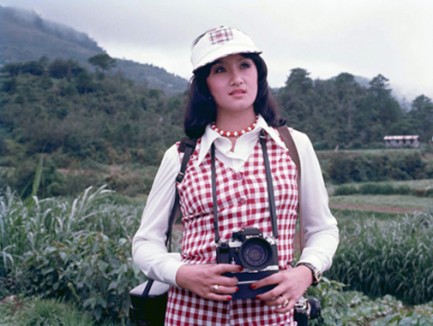 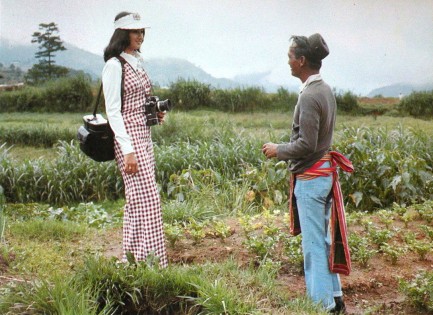 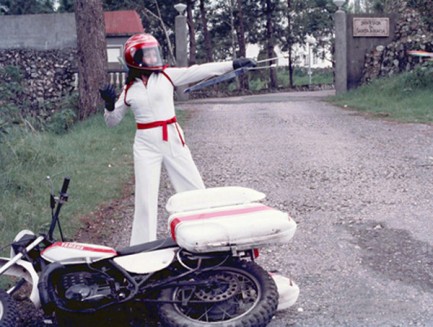 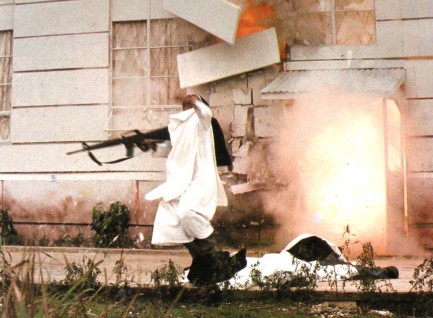 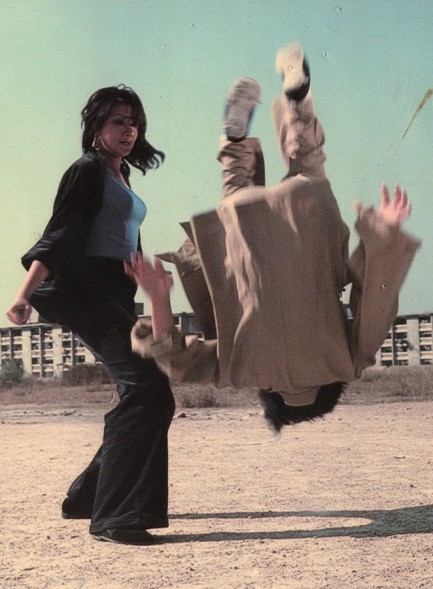 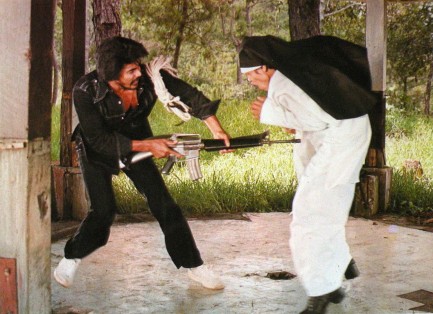 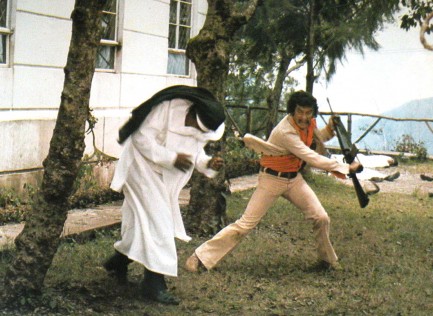 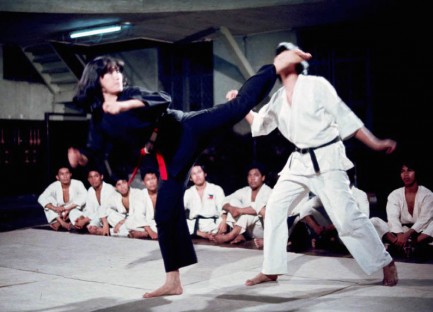 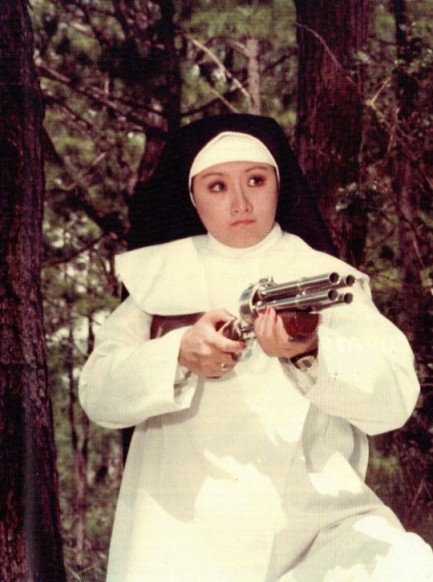 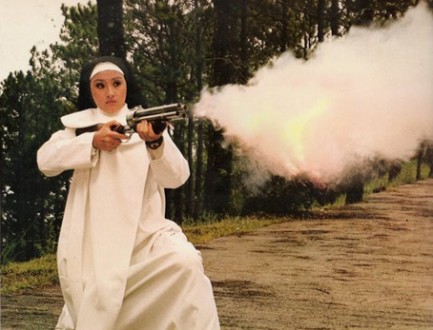 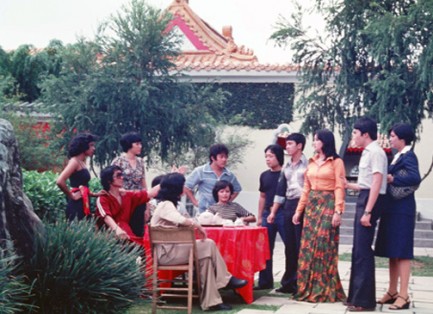 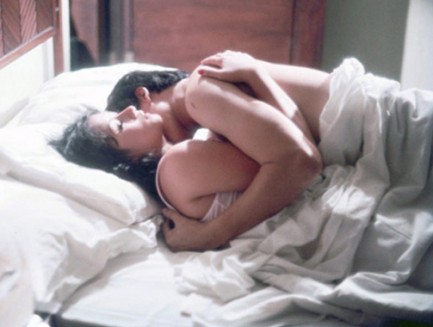 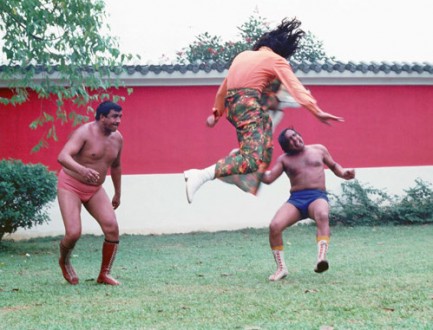 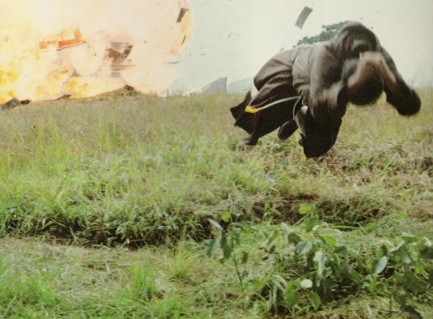 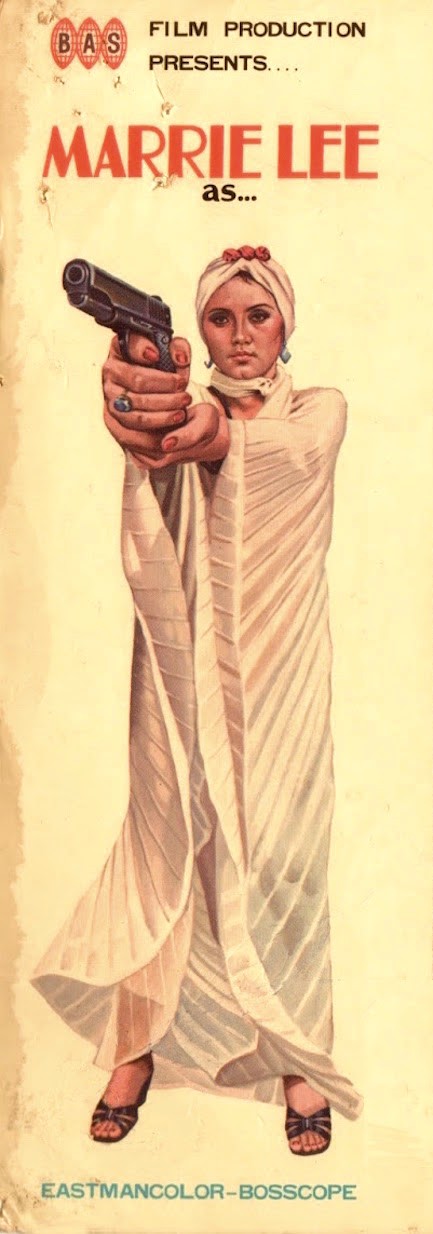
 When the Belle rings it's time for everyone to get it up. 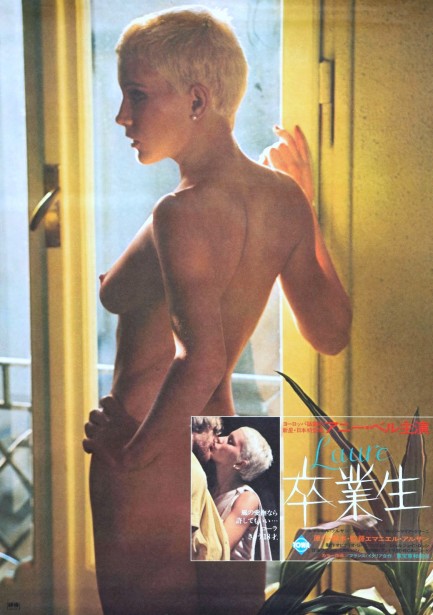 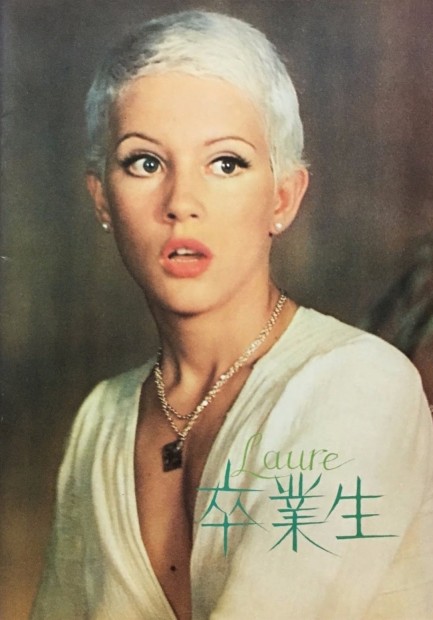
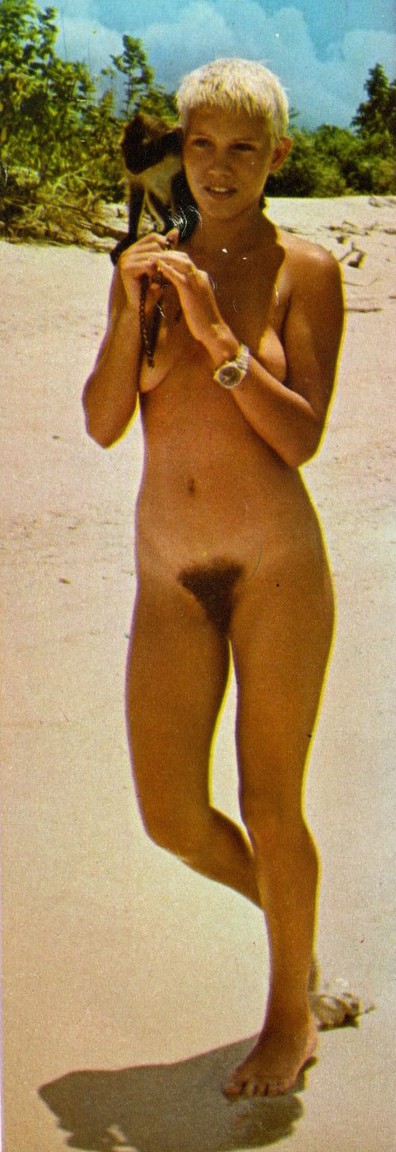 Above is a Japanese poster and a pamphlet front for the French sexploitation flick Laure, aka Forever Emmanuelle, which premiered in Japan today in 1976 after opening in Italy nine months earlier. We watched it, and first of all the movie looks great. It's crisp, bright, and colorful—three things you really want when Annie Belle is the star. We gather that the palpably high budget was due to an infusion of big studio money from Twentieth Century Fox via Cinecittà Studios, as they tried to cash in on the 1970s sexploitation phenomenon. None of this means the movie is good. Above is a Japanese poster and a pamphlet front for the French sexploitation flick Laure, aka Forever Emmanuelle, which premiered in Japan today in 1976 after opening in Italy nine months earlier. We watched it, and first of all the movie looks great. It's crisp, bright, and colorful—three things you really want when Annie Belle is the star. We gather that the palpably high budget was due to an infusion of big studio money from Twentieth Century Fox via Cinecittà Studios, as they tried to cash in on the 1970s sexploitation phenomenon. None of this means the movie is good.
Emmanuelle flicks are chaste and atmospheric, more romance than raunch, and Laure is no exception. Belle plays a highly sexed minister's daughter running wild in the Philippines, from Manila to the jungly outer reaches. There's a plot having to do with searching for the isolated Mara tribe, but the movie is more a series of swinger lifestyle lectures and sexualized vignettes, such as when Belle drops her skirt so she can walk around in public wearing nothing but a shirt that flashes her muff, and when she gets laid in a bamboo hut that's being dragged through the woods by a dozen Filipino workers. She's wanted by everyone whose path she crosses, but it's Al Cliver who piques her interest, thanks to his unwillingness to attempt caging her or cooling her hot blood. At one point he announces, “Jealousy is an obscenity.” It takes quite a man to watch the woman he loves have explosive orgasms with every stranger who happens along.
Of special note is a co-starring turn from Thai/French personality Emmanuelle Arsan, who in 1959 anonymously published the book Emmanuelle, source of the film franchise. Or at least she was thought for years to have been responsible for the book. Her husband Louis-Jacques Rollet-Andriane is now considered the author. Arsan was also credited with directing Laure, or at least co-directing it, but that was Rollet-Andriane again, whose name isn't on the film for reasons too involved to go into here. Well, it's definitely Arsan playing the role of Myrte, adding to the film's visual allure by looking great naked at age forty-four. She can't act, but she's good at giving wise looks and secretive smiles. She's easy to buy as the source—or at least inspiration—for Emmanuelle, because she's a very sexy woman. Despite all the film's beauty, we aren't going so far as to recommend it generally, but for lovers of globetrotting softcore or fans of Annie Belle it's mandatory. 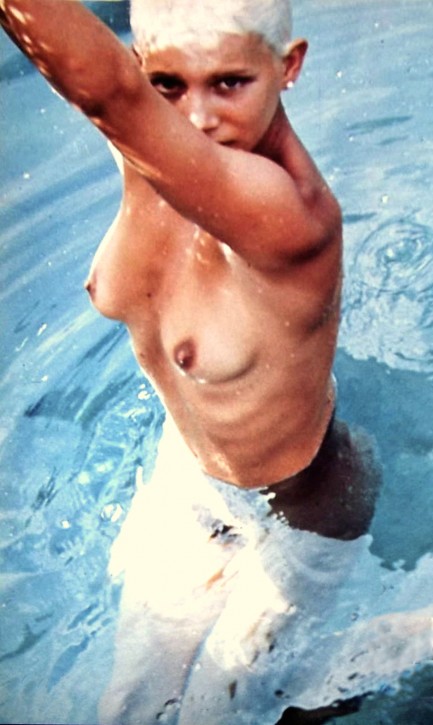 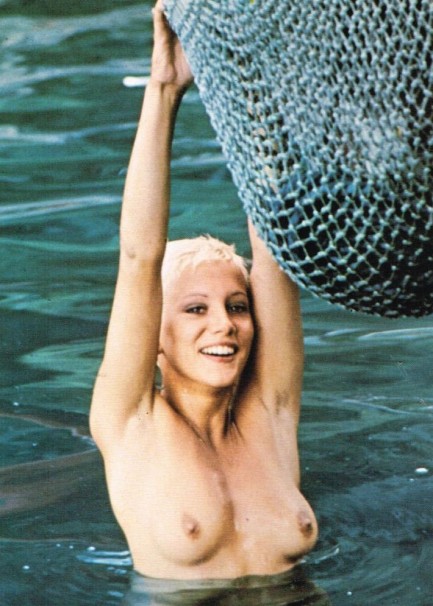 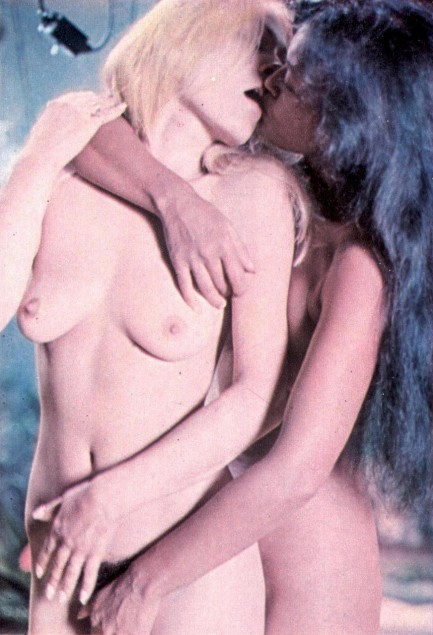 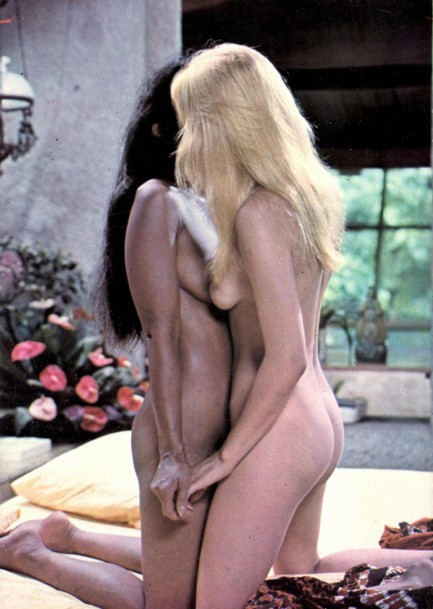 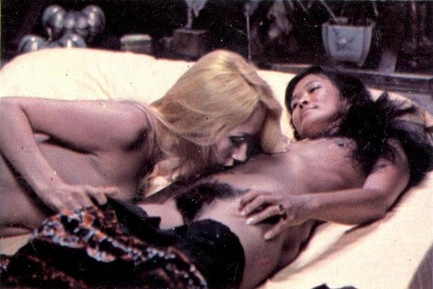 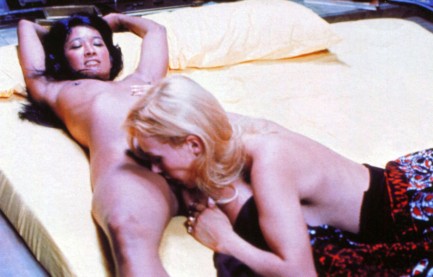 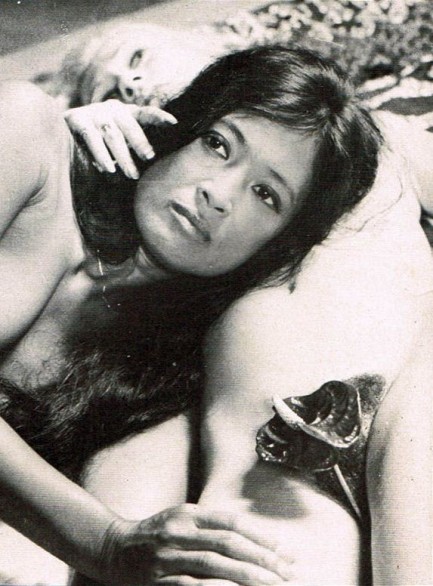 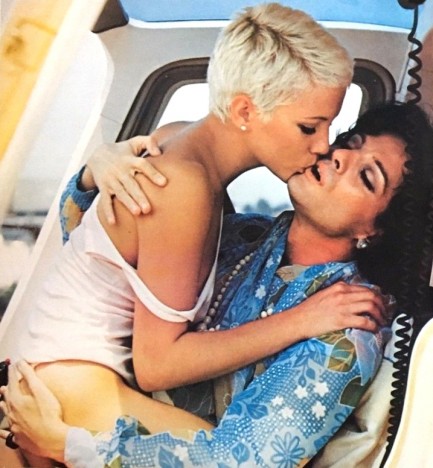 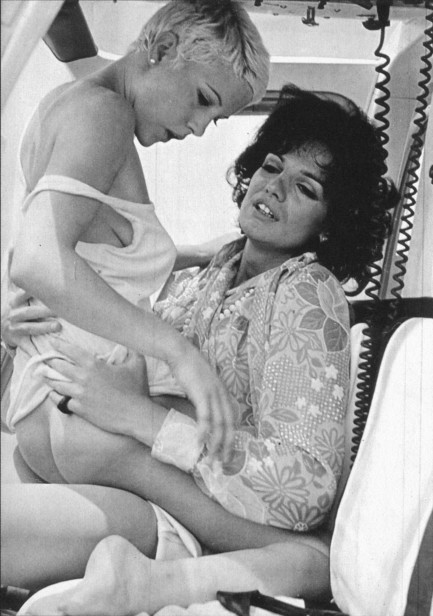 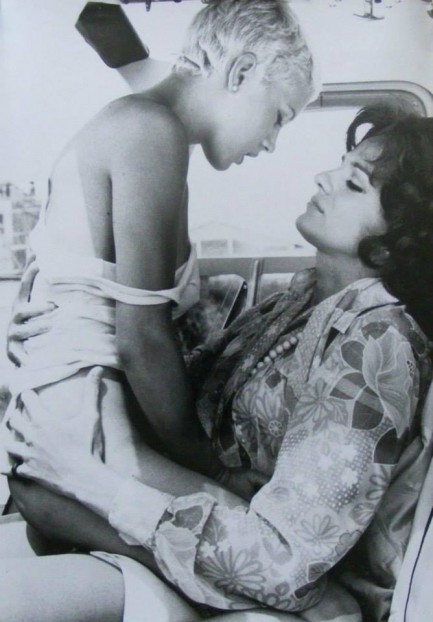 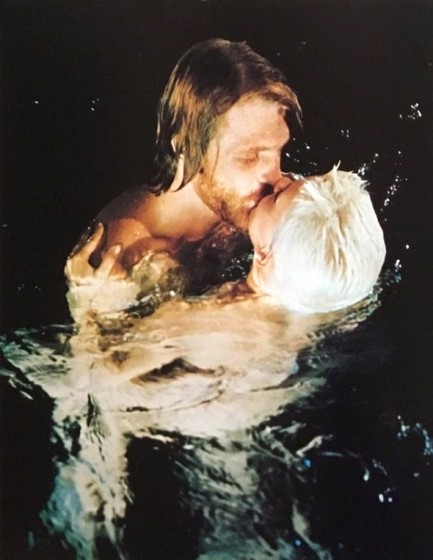 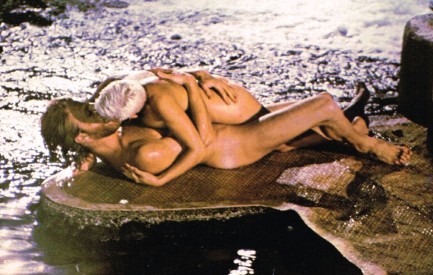 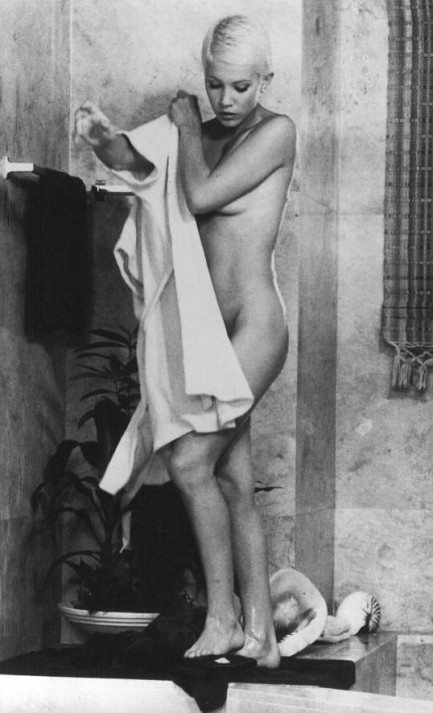 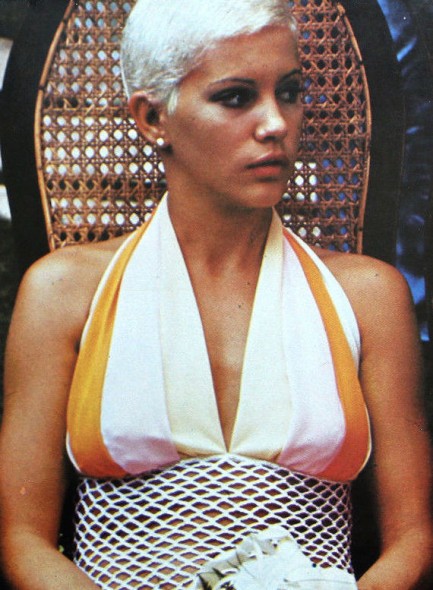 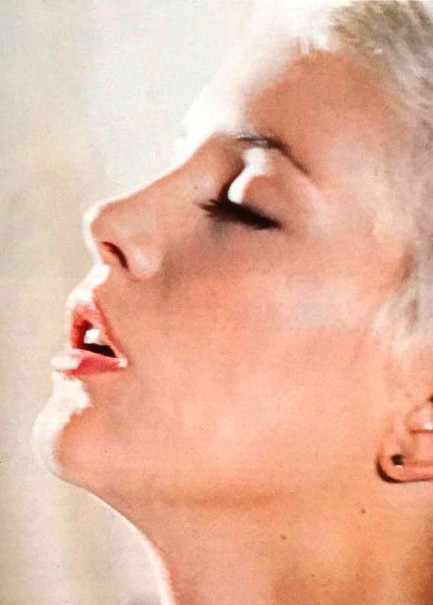 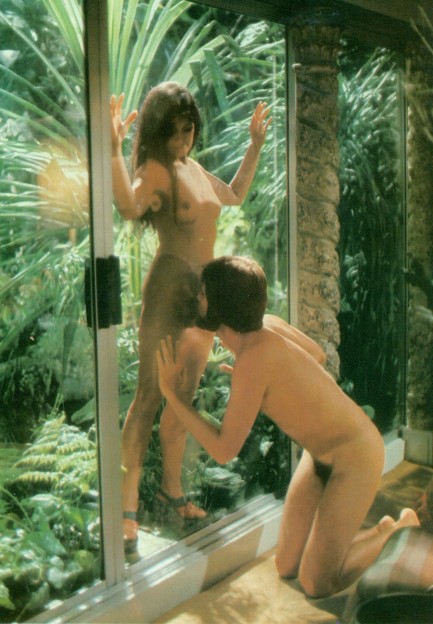  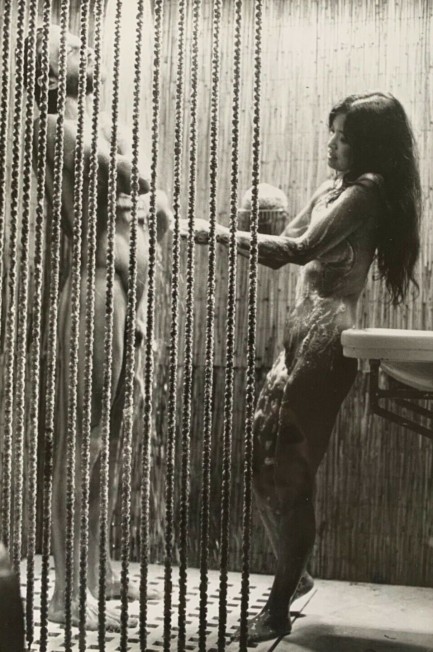 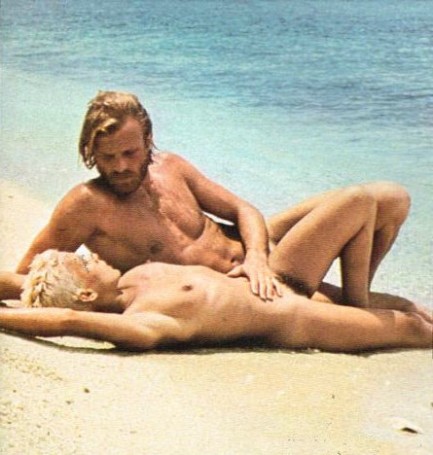 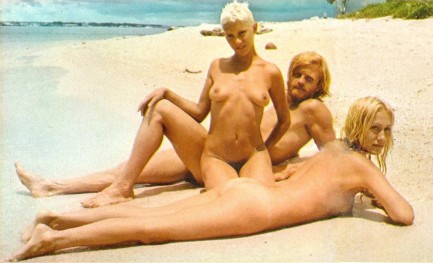 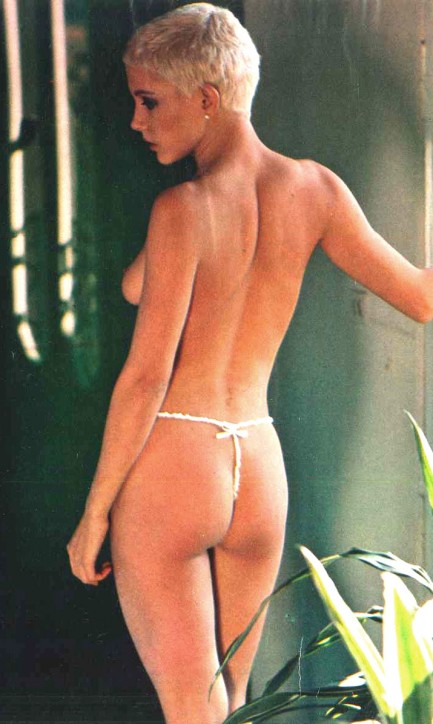
 It's incredible what the Southern California sun can do to your skin. 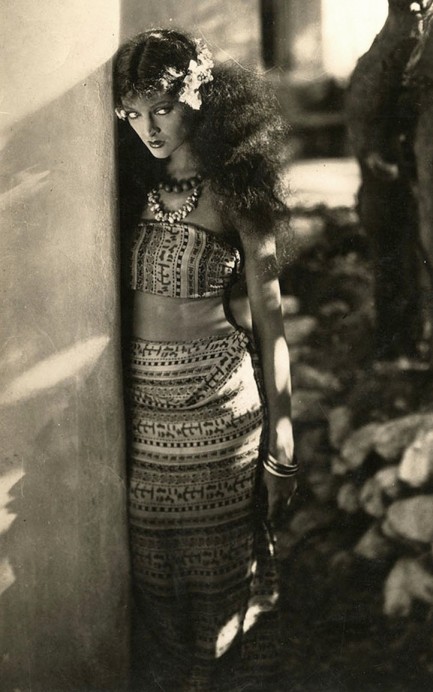
Myrna Loy goes for sultry and inscrutable in this promo photo from her pre-Code silent movie Across the Pacific, in which she plays a half-Filipina girl named Roma. Yeah, it's a stretch, but she does look quite sexy with frizzed out hair and dark skin. All prints of Across the Pacific (not to be confused with the later Humphrey Bogart movie) are considered lost, but Loy was at the beginning of a long career that would encompass scores of movies and span a remarkable seven decades, so there's no shortage of opportunities to see her work. This image is from 1926.
 The only rehabilitation going on here is by the poster artist. 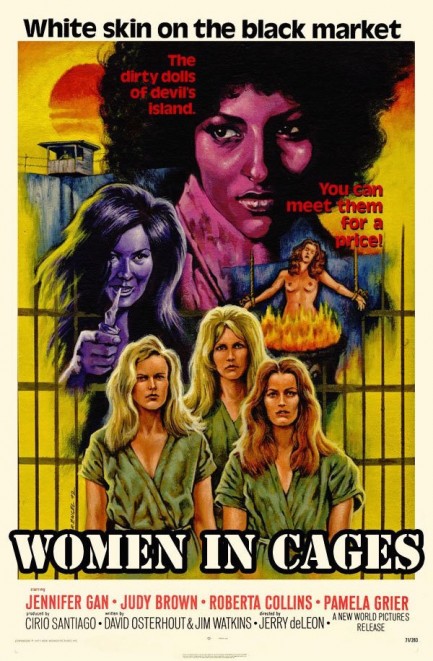
Above you see a striking color poster for the Roger Corman produced women-in-prison flick Women in Cages, one of the many sexploitation epics filmed in the Philippines during the 1970s. For an entertaining ninety minutes on that subject, by the way, you should watch the documentary Machete Maidens Unleashed. It's the final word on the chaos of Philippine movie production and covers everything from Savage! to Apocalypse Now. Women in Cages is one of the earlier Philippine women-in-prison flicks, coming after The Big Doll House.
Despite the fact that the poster is signed R. Engel and dated '72, it's actually a piece of modern pulp made within the last several years. The person behind it is German artist Rainer Engel, who put it together 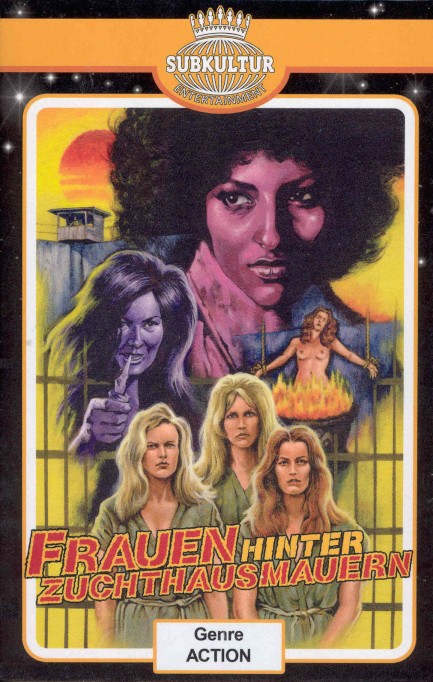 borrowing the DVD box cover art from Subkultur-Entertainment's 2013 re-issue of the movie, which in Germany was called Frauen hinter Zuchthausmauern. We ran across the re-styled poster on the artist's website, decided his mock-up beats the hell out of the 1971 original art, and thought it was worth sharing. borrowing the DVD box cover art from Subkultur-Entertainment's 2013 re-issue of the movie, which in Germany was called Frauen hinter Zuchthausmauern. We ran across the re-styled poster on the artist's website, decided his mock-up beats the hell out of the 1971 original art, and thought it was worth sharing.
When we wrote about the film a while ago we said we thought it was a bit much. Specifically, it's relentlessly grim. Of the trilogy that includes The Big Doll House and The Big Bird Cage this middle entry is the one that forgot the first rule of the 1970s women-in-prison genre—the movie should be absurd and fun. When it isn't—i.e. when it shades into depressing realism—you come away wondering if there's something wrong with you for having watched it in the first place. You can read our post on the film here, and you can visit the artist's website here.
 Jeanne Bell karate chops her way across Hong Kong. 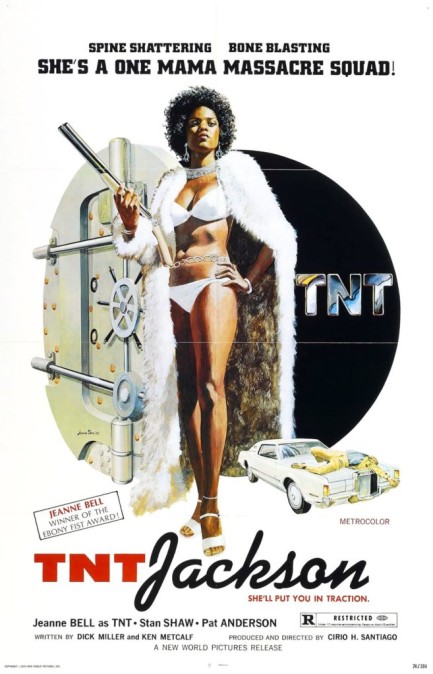
TNT Jackson, for which you see the U.S. promo poster painted by John Solie above, is a mid-budget blaxploitation flick shot in the Philippines and Hong Kong, built around clumsy martial arts, a flimsy plot, and shoddy acting. But it has Jeanne Bell. Playboy magazine had made Bell a centerfold in 1969. From there she launched a movie career, with TNT Jackson coming ninth in her filmography. She plays Diana “TNT” Jackson, who learns that her brother was killed by Hong Kong drug dealers and seeks payback. While the plot is nothing special, Bell certainly is. She was twenty-five and wore a bouffant hair-do when she first appeared in Playboy; in TNT she was thirty and had blossomed into an unforgettable beauty with a frosted afro, kicking and chopping her way across the movie screen. All the fight scenes are hilarious, with their cut-rate choreography and claw-handed posing, but they're fun to watch, especially the one in which she kicks the shit out of a bunch of guys while wearing only panties. That bit seems to us a clear homage to Reiko Ike's totally nude fight in 1973's Sex & Fury, another movie that surpasses its limitations by piling on style and attitude. Is TNT Jackson actually good? No—but we bet it'll make you smile. It premiered in the U.S. today in 1974.
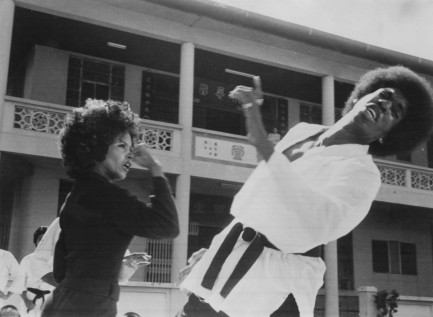 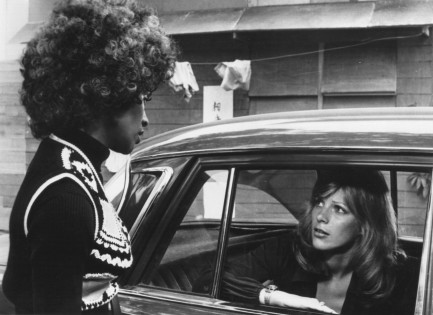 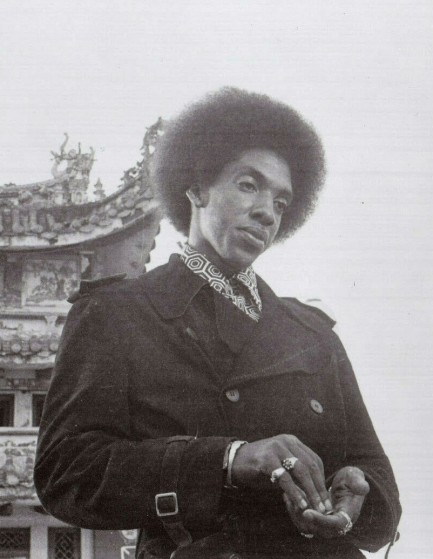 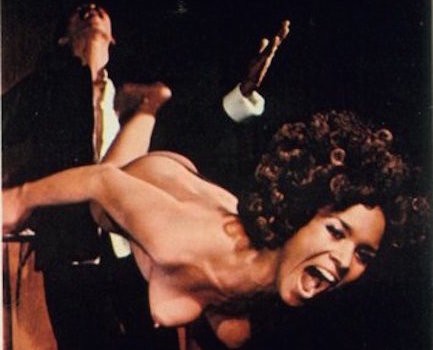 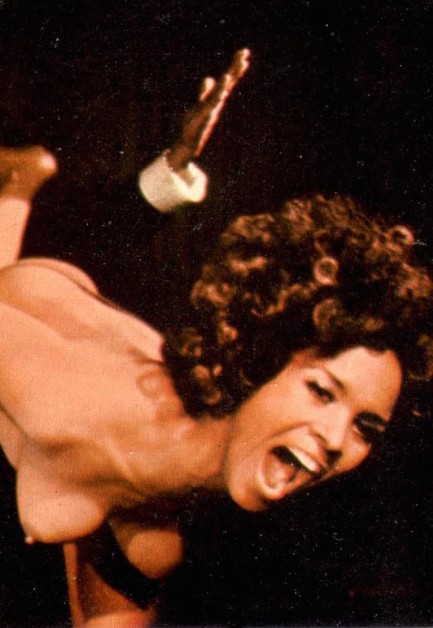 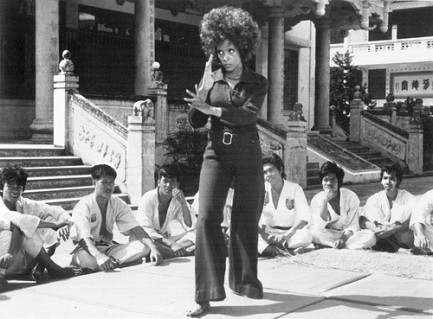
 Treat your toys with care or they might break out. 
Above is an Italian poster for the American financed, Philippine shot sexploitation actioner The Big Doll House, which starred Roberta Collins, Brooke Mills, Pat Woodell, Pam Grier, and Judy Brown. This wasn't the first women in prison movie—those had been appearing for decades—but it was the one that got the ’70s prison sexploitation ball rolling in the U.S. It offers a full slate of whippings, waterboardings, overheated isolation, and bizarre snake tortures, orchestrated by the evil wardeness Christiane Schmidtmer. Collins leads the beautiful convicts' eventual escape from bondage and hers is the most memorable character in the ensemble, though all the personalities are interesting. Don't get us wrong—the acting is of course atrocious, and the production values aren't high, but that didn't bother us and it didn't bother American audiences either. They made the movie a hit and the women-in-prison conveyor belt quickly cranked out other Filipino bondage productions like Women in Cages, The Hot Box, The Woman Hunt, The Big Bird Cage, and many others. The Big Doll House wasn't the best of the lot, by any stretch, but hey—being a trailblazer matters. We think it's worth a viewing.
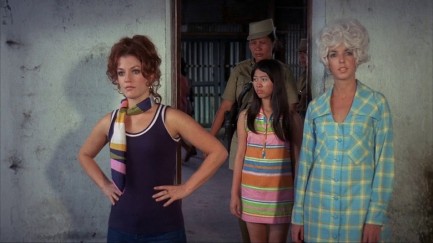 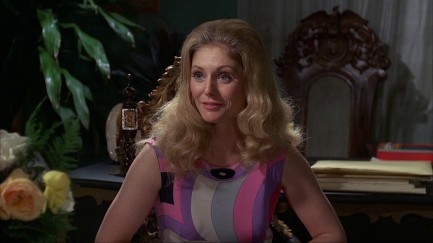  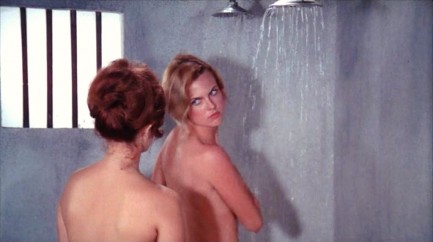 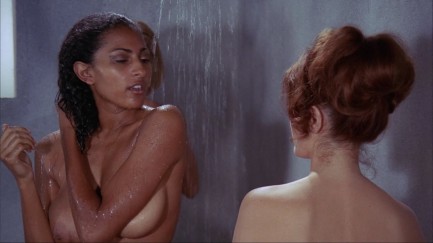 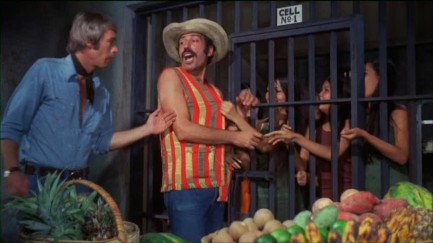 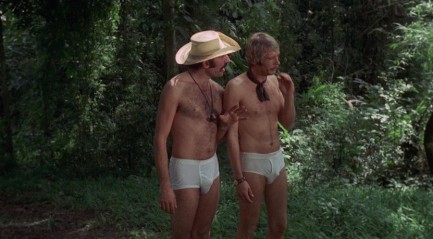 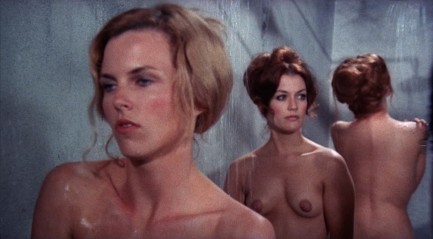 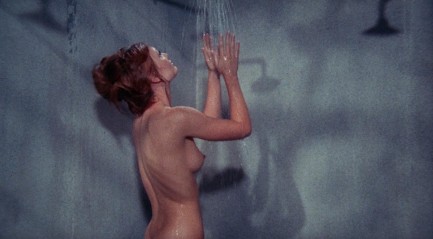 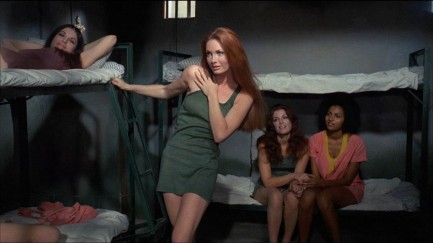
 Hong Kong kidnappers have problems mastering possession, and so do the filmmakers. 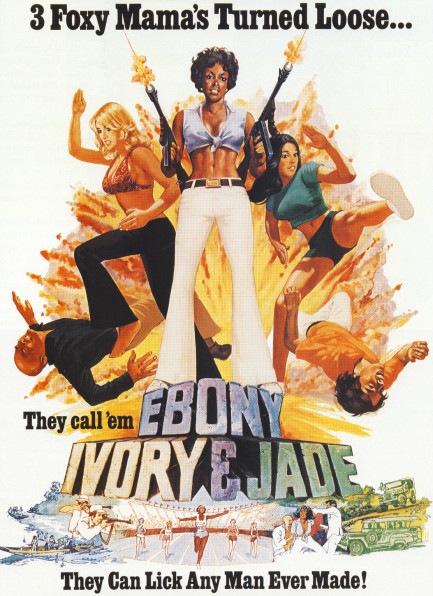
If Tarantino likes it, it must be tops. At least that's the assumption some would make upon learning that 1976's Ebony, Ivory & Jade, aka She-Devils in Chains, has Tarantino's stamp of approval. Well, despite the endorsement and status as a minor classic of the blaxploitation genre, the film isn't great. It has some highlights, including confidently staged action sequences and camerawork that does seem to have influenced Tarantino. But its failings are legion—bad script, wooden acting, and heavy duty crushed black levels that make the actors almost impossible to see in the night sequences. We'll give a pass on that last problem, because it could have happened during the video or DVD transfer.
We'll admit though, this flick is damned funny in parts—unintentionally so, foremost the character Stacy's beatdown of a bad guy who morphs into a dummy at the moment she hoists him overhead and helicopter spins him through a room divider. The basic idea of the film is also appealing—Hong Kong bad guys kidnap five female track stars for ransom, unaware that two of them happen to be martial arts experts that will cause no end of trouble once they untie themselves. Playboy playmate Rosanne Katon in the lead role is also a plus. But as blaxploitation, even a discernibly elevated budget doesn't lift the film above other entries in the genre.
As a side note, the above promo poster should help put to rest any idea that apostrophe illiteracy has something to do with modern education or the internet or whatever. It has always been a problem, and we see it all the time in vintage material. This particular failure to master the possessive form is pretty egregious, though. Yes, it's attached to a movie shot in the Philippines, but the error made it all the way through a phalanx of American writers, designers, pre-press workers, printers, and producers working in the U.S. of A. at—or at least for—Lawrence Woolner's Dimension Pictures. Pretty bad. Though as we've noted in the past, sometimes apostrophe placement can be legitimately tricky. 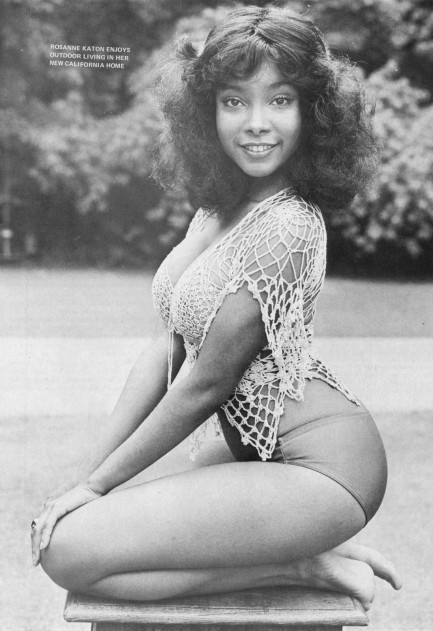
 Machine gun Margaret strikes again. 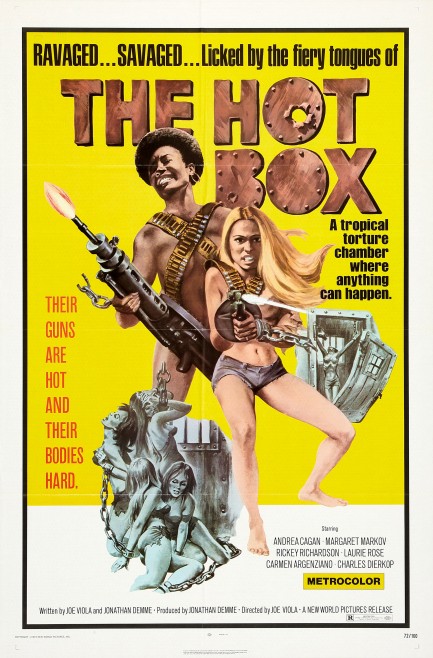
In the tropical Republic of San Rosario four beautiful nurses—Margaret Markov, Rickey Richardson, Andrea Cagan, and Laurie Rose—are kidnapped and forced to teach the healing arts to a revolutionary army so it can bring medical care to villages it liberates. While one of the nurses begins to agree with the captors, the others just want to escape. But when they do, they are captured by an army leader and what they learn prompts them to escape back to the revolutionaries' jungle compound to warn them of an impending government attack. Scripted by Jonathan Demme and produced in the sweaty Philippines by sexploitation specialists New World Pictures, The Hot Box features most of the elements you expect from jungle sleaze, with perhaps less skin than the standard. But there's plenty of leering, drooling, and general depravity, followed by punching, kicking, stabbing, and Margaret Markov going cyclical with a machine gun. By the way, we'd not note this ordinarily, but post-massacre we'll add that mowing down people with machine guns is fine for cinema, but all other applications are idiotic and tragic. There's a debate online about whether this is a women-in-prison film. People often get obtuse online—of course it's a women-in-prison film. The nurses don't spend three reels inside a bamboo cage being hosed down with river water, but they are twice held against their will and escape both times. Textbook stuff. Do we recommend the film? Not quite. But Markov is always worth the time. Amongst a slate of atrocious performers, she can almost act. Almost. The Hot Box premiered in the U.S. today in 1972.
 |  |
|
 |

The headlines that mattered yesteryear.
1945—Mussolini Is Arrested
Italian dictator Benito Mussolini, his mistress Clara Petacci, and fifteen supporters are arrested by Italian partisans in Dongo, Italy while attempting to escape the region in the wake of the collapse of Mussolini's fascist government. The next day, Mussolini and his mistress are both executed, along with most of the members of their group. Their bodies are then trucked to Milan where they are hung upside down on meathooks from the roof of a gas station, then spat upon and stoned until they are unrecognizable. 1933—The Gestapo Is Formed
The Geheime Staatspolizei, aka Gestapo, the official secret police force of Nazi Germany, is established. It begins under the administration of SS leader Heinrich Himmler in his position as Chief of German Police, but by 1939 is administered by the Reichssicherheitshauptamt, or Reich Main Security Office, and is a feared entity in every corner of Germany and beyond. 1937—Guernica Is Bombed
In Spain during the Spanish Civil War, the Basque town of Guernica is bombed by the German Luftwaffe, resulting in widespread destruction and casualties. The Basque government reports 1,654 people killed, while later research suggests far fewer deaths, but regardless, Guernica is viewed as an example of terror bombing and other countries learn that Nazi Germany is committed to that tactic. The bombing also becomes inspiration for Pablo Picasso, resulting in a protest painting that is not only his most famous work, but one the most important pieces of art ever produced. 1939—Batman Debuts
In Detective Comics #27, DC Comics publishes its second major superhero, Batman, who becomes one of the most popular comic book characters of all time, and then a popular camp television series starring Adam West, and lastly a multi-million dollar movie franchise starring Michael Keaton, then George Clooney, and finally Christian Bale. 1953—Crick and Watson Publish DNA Results
British scientists James D Watson and Francis Crick publish an article detailing their discovery of the existence and structure of deoxyribonucleic acid, or DNA, in Nature magazine. Their findings answer one of the oldest and most fundamental questions of biology, that of how living things reproduce themselves.
|

|
|

It's easy. We have an uploader that makes it a snap. Use it to submit your art, text, header, and subhead. Your post can be funny, serious, or anything in between, as long as it's vintage pulp. You'll get a byline and experience the fleeting pride of free authorship. We'll edit your post for typos, but the rest is up to you. Click here to give us your best shot.

|
|




 and ten other titles. All that winning finally got her noticed by Hollywood movers and shakers. In 1955, performing under the name Carolyn Mitchell, she made her acting debut on the television show Crossroads, and in 1958 co-starred in two Roger Corman b-movies, The Crybaby Killer and Dragstrip Riot.
and ten other titles. All that winning finally got her noticed by Hollywood movers and shakers. In 1955, performing under the name Carolyn Mitchell, she made her acting debut on the television show Crossroads, and in 1958 co-starred in two Roger Corman b-movies, The Crybaby Killer and Dragstrip Riot. good for the gander—Rooney found out about these international relations, moved out of the Brentwood house he shared with Thomason, and filed for divorce, charging mental cruelty. The nerve, right?
good for the gander—Rooney found out about these international relations, moved out of the Brentwood house he shared with Thomason, and filed for divorce, charging mental cruelty. The nerve, right?






















 Above is a Japanese poster and a pamphlet front for the French sexploitation flick Laure, aka Forever Emmanuelle, which premiered in Japan today in 1976 after opening in Italy nine months earlier. We watched it, and first of all the movie looks great. It's crisp, bright, and colorful—three things you really want when Annie Belle is the star. We gather that the palpably high budget was due to an infusion of big studio money from Twentieth Century Fox via Cinecittà Studios, as they tried to cash in on the 1970s sexploitation phenomenon. None of this means the movie is good.
Above is a Japanese poster and a pamphlet front for the French sexploitation flick Laure, aka Forever Emmanuelle, which premiered in Japan today in 1976 after opening in Italy nine months earlier. We watched it, and first of all the movie looks great. It's crisp, bright, and colorful—three things you really want when Annie Belle is the star. We gather that the palpably high budget was due to an infusion of big studio money from Twentieth Century Fox via Cinecittà Studios, as they tried to cash in on the 1970s sexploitation phenomenon. None of this means the movie is good.
























 borrowing the DVD box cover art from Subkultur-Entertainment's 2013 re-issue of the movie, which in Germany was called Frauen hinter Zuchthausmauern. We ran across the re-styled poster on the artist's website, decided his mock-up beats the hell out of the 1971 original art, and thought it was worth sharing.
borrowing the DVD box cover art from Subkultur-Entertainment's 2013 re-issue of the movie, which in Germany was called Frauen hinter Zuchthausmauern. We ran across the re-styled poster on the artist's website, decided his mock-up beats the hell out of the 1971 original art, and thought it was worth sharing.
























